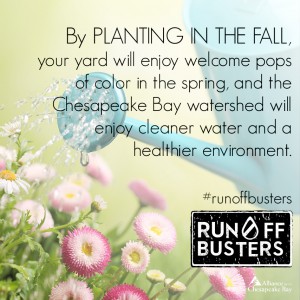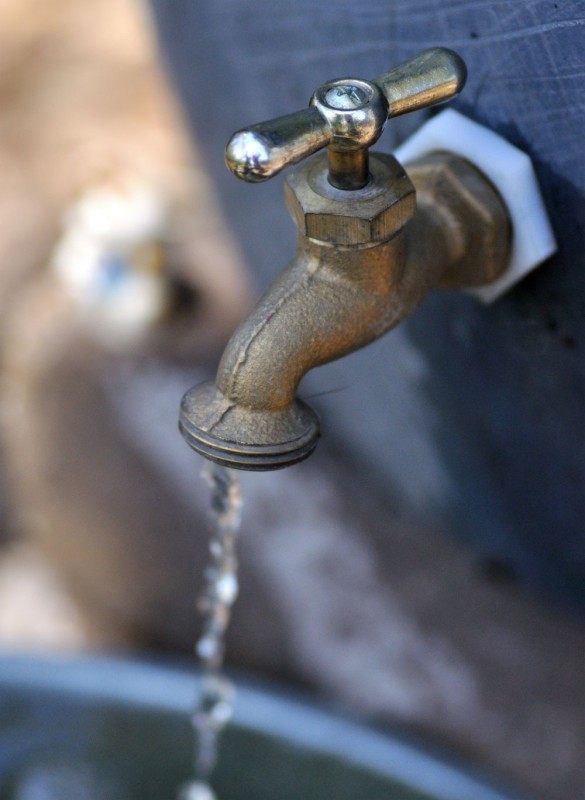Fall into Planting
 Most of us think of spring as the season to start sprucing up our yards with new plants. It seems to make sense, right? The days are getting longer, and temperatures are starting to rise after long winters around the Chesapeake Bay. Spring is when plants start to wake up for the coming year.
Most of us think of spring as the season to start sprucing up our yards with new plants. It seems to make sense, right? The days are getting longer, and temperatures are starting to rise after long winters around the Chesapeake Bay. Spring is when plants start to wake up for the coming year.
Summer is when plants are out in full force and we can enjoy everything they have to offer, whether it’s tomato slices topping burgers at a barbeque on a grassy lawn, or the latest farmer’s market finds.
But what about fall? The leaves are already falling off the trees and we’re all getting ready to pull our winter coats out of storage. Aren’t most of the plants getting ready for winter too?
NO. I’m putting my roots foot down- it’s time to set the record straight and fall into planting at the right time of year. Professional landscapers insist that fall is actually the best time for landscaping and planting, especially if you want to help your local waterways and the Chesapeake Bay.
“I say fall is the better time…we all know that a healthier plant means less work for the gardener and a better impact on our environment,” says Yulita Ellis, Vice President of the Virginia Society of Landscape Designers.

Many people add fertilizer to their yard along with new bulbs and plants. April showers might bring May flowers, but these storms also carry extra fertilizer and sediment into storm drains. When fertilizer is added during the spring or summer, the next rainstorm that comes along can carry those pollutants from your storm drain into local waterways and straight into the Bay.
Fertilizer is like a double espresso shot of nitrogen and phosphorus that spurs the top growth of plants over root development. When fertilizer enters the Bay in the warm spring and summer, it spurs plant growth there too – but typically not the plants we want there. The excess nitrogen and phosphorus from fertilizers can fuel algal blooms. Algal blooms harm fish, shellfish, and the underwater Bay plants they use as habitat.
In the fall, the soil is still warm from summer, but temperatures shouldn’t be so hot to stress new plants. Plants take advantage of the coming season to focus on growing strong root systems in the fall instead of producing blooms. It’s the perfect time for bulbs so they can overwinter in your garden. “More roots produced in the fall means a greater ability for the plant to feed the new top growth in the spring,” says Ellis.
By planting in the fall, your yard will enjoy welcome pops of color in the spring, and the Chesapeake Bay watershed will enjoy cleaner water and a healthier environment.
For more information, visit:
Growing into Fall (via Chesapeake Bay Trust)
Fall is for Planting (via Lowes)
What to Plant in the Fall (via Better Homes and Gardens)
Why Planting in the Fall is Good (via Home Nursery)
